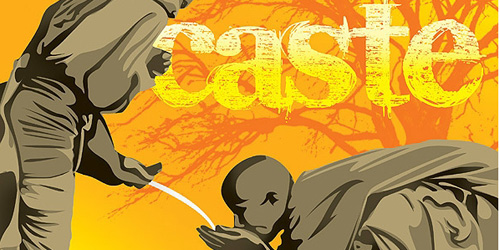Untouchability and Caste system in India
India is having a hierarchical caste system based society not only among Hindus but also among other castes also. Earlier, the people in the lower hierarchies are not accessible to all the resources and are exploited by upper hierarchies as well, they were victims of untouchability practices.
Besides, there were untouchable castes also who were involved in menial jobs such as manual scavengers, Agricultural labourers, skinners of animal hides and so on. There was the concept of YAJMANI SYSTEM, that is little share of produce was given to the non-touchable people.
With time, Change came in the social behaviour of untouchable people due to factors like commercialisation of Agriculture, Emergence of contractual relations and increased employment in factories, Mandis, Army and so on.
Also read: The Caste System in India
MOVEMENTS OF PRE-INDEPENDENCE TIME:
In pre-Independence times, leaders like JYOTI RAO BAPULE started SATYA SHODAK SAMAJ and also written a book called GULAMGIRI creating awareness in the minds of untouchable people. There were also movements to make the lower caste people to enter the temples such as GURUVAYUR SATYAGRAHA.
Gandhiji also played his part in the anti-caste movements by integrating the issue of untouchability into the national movement. Concepts like ADI HINDU and NAMSHUDRAS began to evolve.
BABU JAGJEEVAN RAM, the prominent harijan leader started KHETH MAJDOOR SABHA and DEPRESSED CLASS LEAGUE to alleviate the problems of depressed classes. DR. B R AMBEDKAR, popular leader of depressed classes founded INDEPENDENT LABOUR PARTY in 1936 and ALL INDIA SCHEDULED CASTEFEDERATION in 1942. He also wrote a book called ANNIHILIATION OF CASTES against the caste system. Ambedkar tried to empower the depressed classes by providing them legal rights which we can found in the constitution.
UNTOUCHABILITY MOVEMENTS AFTER INDEPENDENCE:
- In 1956, REPUBLICAN PARTY was formed to fight for the rights of DALITS (victims of untouchability) under the leadership of Y.V.CHAVAN .
- In early 1970’s a new trend called DALIT PANTHERS was emerged in urban areas showing waves of radical politics with student and youth support base
- In 1978, there was an agitation to rename MARATHWADA UNIVERSITY as AMBEDKAR UNIVERSITY which resulted in anti-dalit riots.
- In 1990, PRAKASH AMBEDKAR tried to combine all the dalit organisations for contesting Maharashtra assembly elections but was not successful.
- In 1980’s, in North India BAHUJAN SAMAJWADI PARTY (BSP) was emerged under KASHIRAM with basic aim and strategy based on electoral power that is to empower the depressed classes in political manner.
- Non-Dalit parties and groups like AMBEDKAR SANGHAMS and agricultural unions also played important role in fighting about the issues of Dalits.
- Conversion of Dalits and reservation facilities are the obvious improvements in the status of depressed classes.
- Break down of YAJMANI system proved to be a major break-through.
Also Read: Constitutional Provisions for SC & ST
Still, it is a realty of our caste system that the upper caste people are not accepting lower caste people practising their traditions and performing their rituals. This is what Ambedkar opposed in his book ANNIHILIATION OF CASTES and he wanted a democratic social order based on liberty, equality and fraternity.
CONCLUSION:
Hence, there is a need of critical examination in the context of present day caste system and its religious variations along with untouchability.



